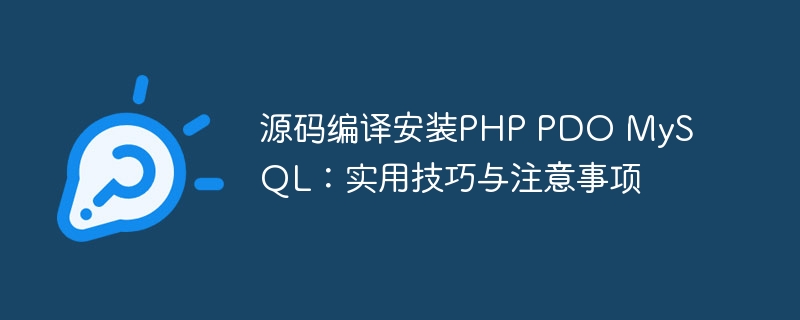

Source code compilation and installation of PHP PDO MySQL: practical tips and precautions
PHP is a widely used server-side scripting language, and MySQL is a popular open source relationship Type database management system, the combination of the two can provide powerful support for website development. In actual development, it is often necessary to use the PHP PDO extension to connect to the MySQL database to achieve data storage and operation. This article will introduce how to install PHP through source code compilation and configure PDO to connect to MySQL. It will also provide some practical tips and precautions to help developers better use these tools for development.
First, you need to download the latest PHP source code package from the PHP official website. You can visit [PHP official website](https://www.php.net/), choose to download the corresponding version of the PHP source code compression package, and then decompress it to the specified directory on the server.
Before starting to compile PHP, you need to ensure that some necessary dependent software packages have been installed on the server, such as gcc, automake, autoconf, libtool, etc. It can be installed on the Linux system through the following command:
sudo apt-get update sudo apt-get install gcc automake autoconf libtool
Enter the PHP source code directory and execute the following command to configure:
./configure --prefix=/usr/local/php --with-pdo-mysql
In the above command , the --prefix parameter specifies the directory where PHP is installed, and the --with-pdo-mysql parameter specifies the support for enabling PDO connection to MySQL during compilation. According to actual needs, other parameters can be added according to different module requirements.
After the configuration is completed, execute the following command to compile and install:
make sudo make install
After the compilation is completed, you can use make testCommand to test to ensure that PHP is compiled and installed successfully.
Open the php.ini file in the PHP installation directory and add the following configuration:
extension=pdo_mysql.so
Save and close the file, and then restart PHP service to make the configuration take effect.
Through the above steps and techniques, we can successfully compile and install PHP and configure the method for PDO to connect to MySQL. At the same time, precautions and practical tips can also help developers better apply these tools for business development and improve development efficiency and code quality. Hope this article is helpful to developers.
The above is the detailed content of Source code compilation and installation of PHP PDO MySQL: practical tips and precautions. For more information, please follow other related articles on the PHP Chinese website!




